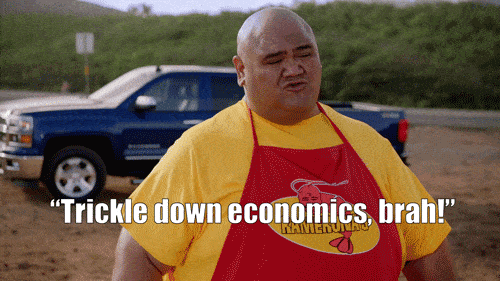- The Crunch
- Posts
- US Economic Shift: From Soft Landing to Turbulence Ahead
US Economic Shift: From Soft Landing to Turbulence Ahead
What's the story?
Recent financial indicators have painted a less rosy picture of the US economy. Over the past two weeks, the yield on the US 10-year bond rose by approximately 0.5 percentage points, reaching around 4.8 per cent. This is part of a wider shift in the entire interest rate structure, which has had significant ramifications for businesses and households. Borrowing rates for companies have surged, car loans have become more burdensome for families, and deposit outflows from banks have become more pronounced. Moreover, the cost of a 30-year mortgage is on the verge of surpassing 8 per cent, making home ownership increasingly challenging. Internationally, these shifts have led to pricier and less dependable financing, and Japan's monetary policy exit is becoming more complex, causing ripple effects back to the US. 📉
What does this mean?
Driving these increasing yields is the market's realization that the higher policy rates set by the Federal Reserve might persist, compounded by the need to accommodate a substantial supply of Treasury bonds due to sizeable budget deficits. Additionally, rising oil prices due to robust demand, OPEC+ production cuts, and dwindling inventories pose a considerable risk of broader inflation for various goods and services. This landscape does not bode well for economic growth and heightens the threat of stagflation. Financial stability is also at risk due to interest rate discrepancies within certain banks, refinancing needs of other financial entities, and potential credit dislocations. While financial markets rapidly adapt to these elevated rates, the real economy's response is more nascent, and a challenging journey lies ahead. Concerns are growing over the Federal Reserve's ability to adjust its policy approach in light of these changes. The delay in adapting to a new economic reality, wherein the supply sector is less flexible for a prolonged period, increases the risks to economic health. 🛢️
Why should I care?
Previously, the narrative revolved around markets adjusting to central banks grappling with inflation. Now, the focus is on the markets reconciling with the possibility of higher rates enduring longer, which could potentially hamper growth. A crucial aspect to watch is the Federal Reserve's strategy. Last year, Fed chair Jay Powell highlighted their aim to influence spending and investment decisions through their economic and interest rate projections. However, if there's increased political turmoil and if the Fed hesitates in altering fundamental aspects of its policy formulation, the outcome might be unfavorable not just for the US but for the global economy. The pressing matter isn't just about imminent rate hikes but the duration they will be sustained to meet economic objectives. 🌐

Gif by cbs on Giphy